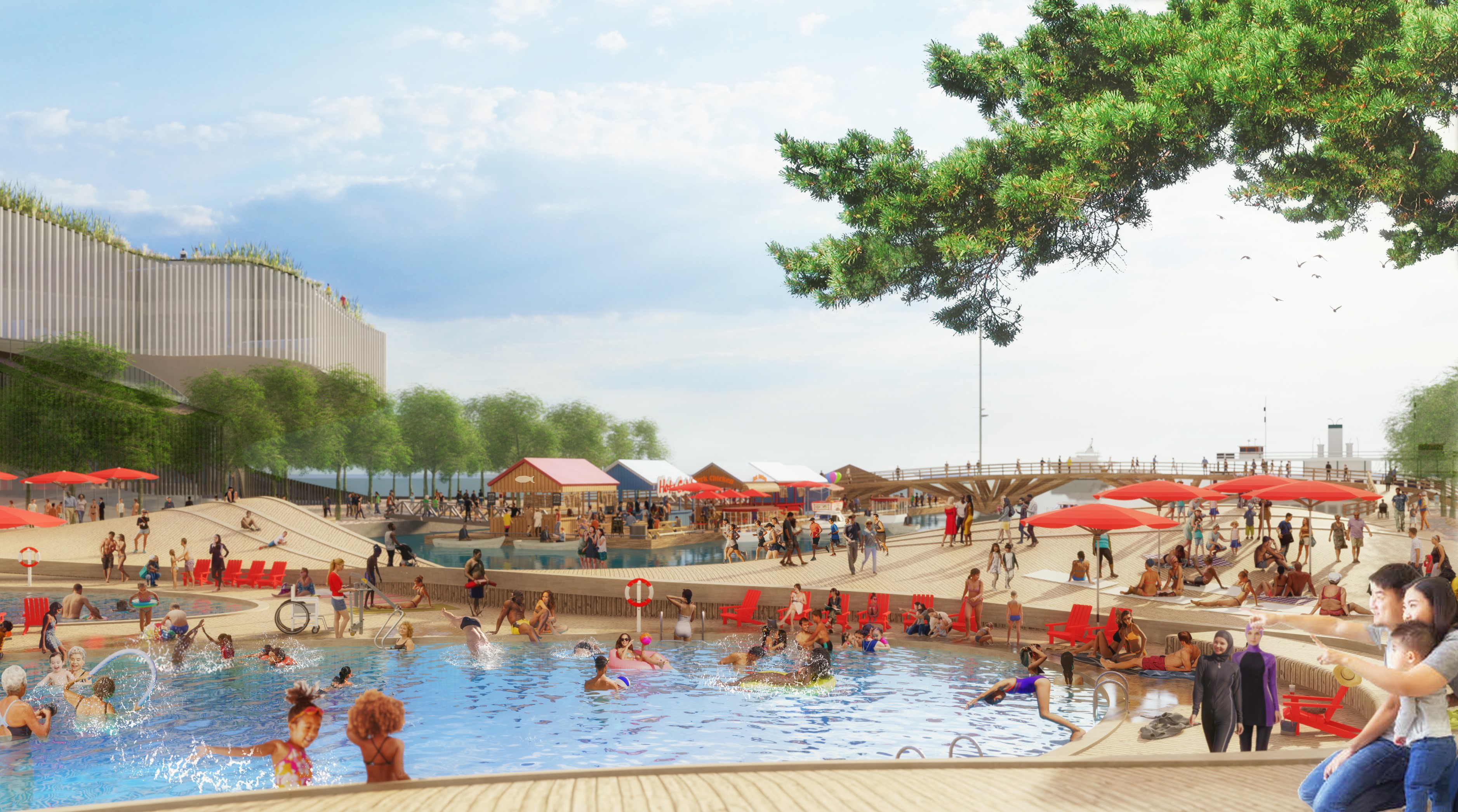
Concept drawing for the future of Toronto’s Parliament Slip waterfront development © Waterfront Toronto
Toronto’s waterfront is 46 kilometres long end to end. It is the most extensive urbanized coast in the world. Only recently has the city turned its attention to exploring the lake beyond its shoreline.
One of the leading experts in water and architecture is Toronto resident Christie Pearson. An adjunct professor at the University of Waterloo School of Architecture, Pearson has just published a book with MIT Press called The Architecture of Bathing: Body, Landscape, Art. In it, she explores the relationship between architecture, landscape and our universal desire to spend time in and around water. The interconnections go back centuries to Turkish hammams, the Japanese sento and Indian step wells.
In modern times, we still seek out places where we can let our body-conscious guard down and enjoy the benefits of bathing in public. Whether it be in a naturalized outdoor swimming pool or reclining on an artificial beach, getting close to water is a natural part of the human condition. Many of the projects featured in Pearson’s book serve as inspiration for integrating water into contemporary urban environments, especially along shorelines. Among the more exemplary projects is Harbour Bath in Copenhagen, a watering hole that has become a touchstone for cities around the world looking to revitalize their aquatic assets. Rather than imitating the traditional indoor swimming experience, Harbour Bath is an urban harbour landscape with dry-docks, piers, boat ramps, cliffs, playgrounds and pontoons that extend into the existing waterway. It is a place where Danes go swimming in the middle of their city.
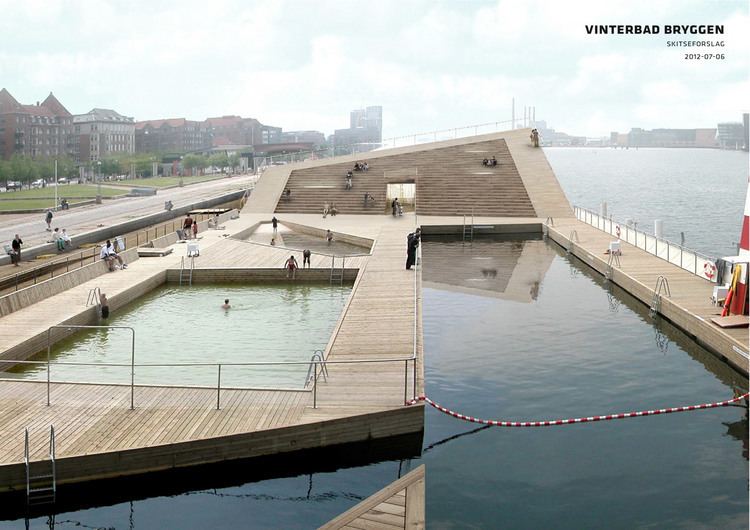
Harbour Bath is renowned for rejuvenating Copenhagen's harbour as a swimming destination.
The Swedish city of Gothenburg offers another offshore experience. Berlin-based architecture firm Raumlabor built a rather wonky-looking sauna on a pier that is accessed via a wooden gangway. As a public facility, it is intended to do what sauna do best, which is to steam away tension and stress. But it is also there to re-establish a former communal bathing culture that has been lost.
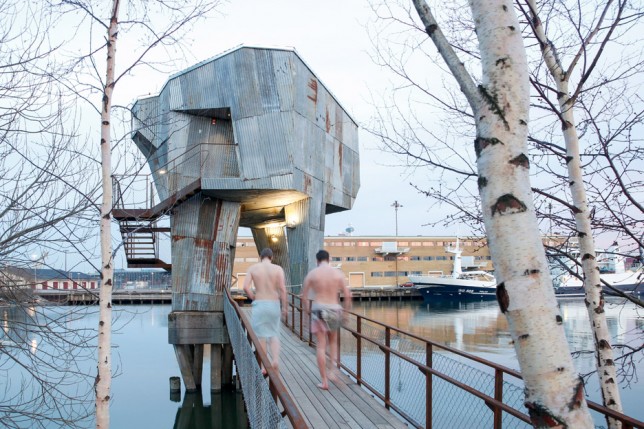
The harbour sauna in Gothenburg re-introduces steam bathing as a way to connect with friends and colleagues. © Raumlaborberlin
By comparison, Toronto hasn't kept pace with its Nordic cousins when it comes to experimenting with its idyllic waterfront. Lake Ontario has remained a barrier for various reasons, including its frigid temperatures and temperamental currents that make safety a challenge. But are those hurdles unconquerable? Others have overcome similar concerns. Why not here?
During the pandemic, it wasn’t uncommon to see ice skaters gliding across the inner harbour’s frozen terrain. Despite the activity being unregulated and dangerous, families, kids, and dogs enjoyed the freedom and adventure of utilizing the naturalized rink. In summer, lake swimmers also began making up their own rules as to where they would swim, and when, regardless of a lifeguard. The sight of so many skaters and swimmers transgressing laws begged the question: Why has Toronto been reluctant to engage with the lake beyond the water’s edge?
One of the most inspiring aspects of the now-defunct Sidewalk Lab’s proposal for Toronto's eastside lakeshore was its theatrical engagement with the water in every season, particularly between November and April, when temperatures regularly drop below zero. Sidewalk Lab described its weather-proofing schemes – such as heated bike lanes and canopies that block wind and snow along pedestrian routes – as “taming winter.” Renderings of the shoreline site showed lake-water skating rinks and geodesic island domes set up for dining while surrounded by ice. In warmer seasons, the same site revealed a waterscape alive with boat docks, designated swimming zones and acqua volleyball courts. It was novel to see a development that expressed aspirations beyond the view offered to future condo dwellers, and one that revealed all-season activities for the public to enjoy.
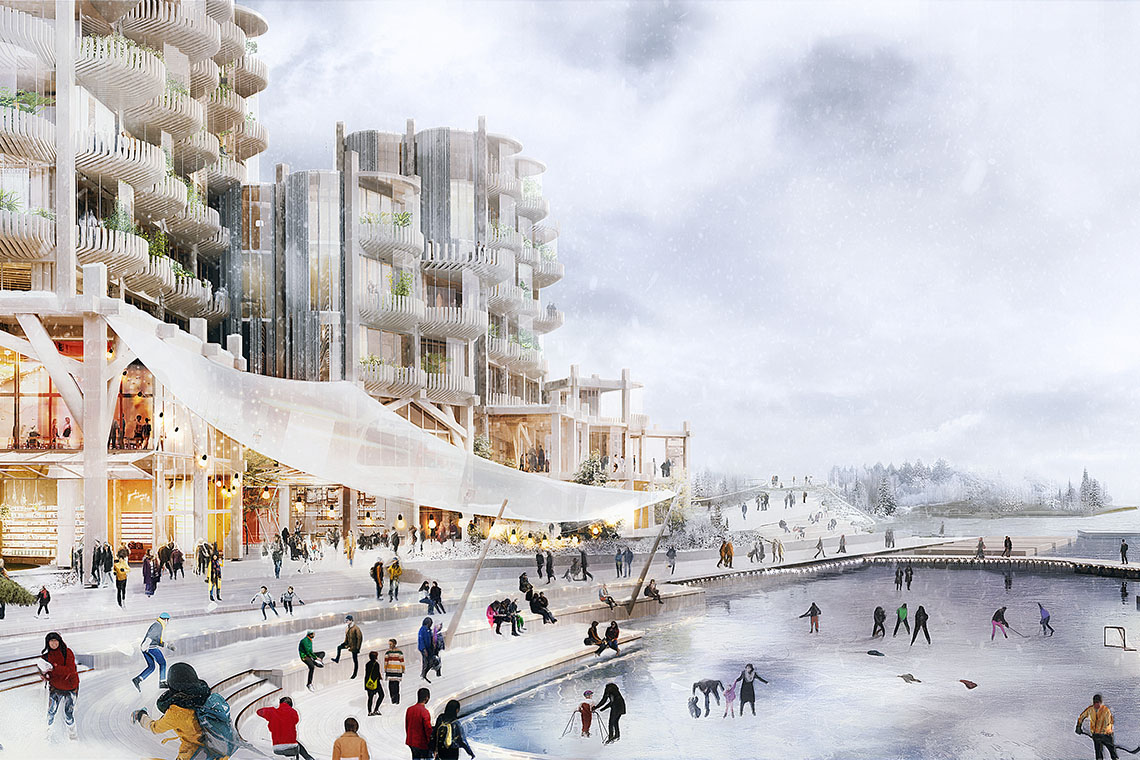
Sidewalk Lab’s now defunct waterfront plan embraced winter as well as summer activities. © Sidewalk Labs
In the wake of Sidewalk Lab’s departure, Waterfront Toronto has issued an international RFQ to reimagine the same 12-acre parcel of land, located at the base of Parliament Street. The two-page proposal describes a mixed-use neighbourhood thriving around a generously sized inlet that is ideal for hosting a bevy of water-friendly features. Preliminary drawings reveal the inlet teaming with outdoor pools, footbridges, floating docks and finger piers for launching small boats. As well, it describes the site’s seasonal potential, though without showing what winter activities they are imagining.
This is a special site because it is the last undeveloped parcel of land in the downtown core. Hopefully, it will become the gateway for more connectivity between land and water.
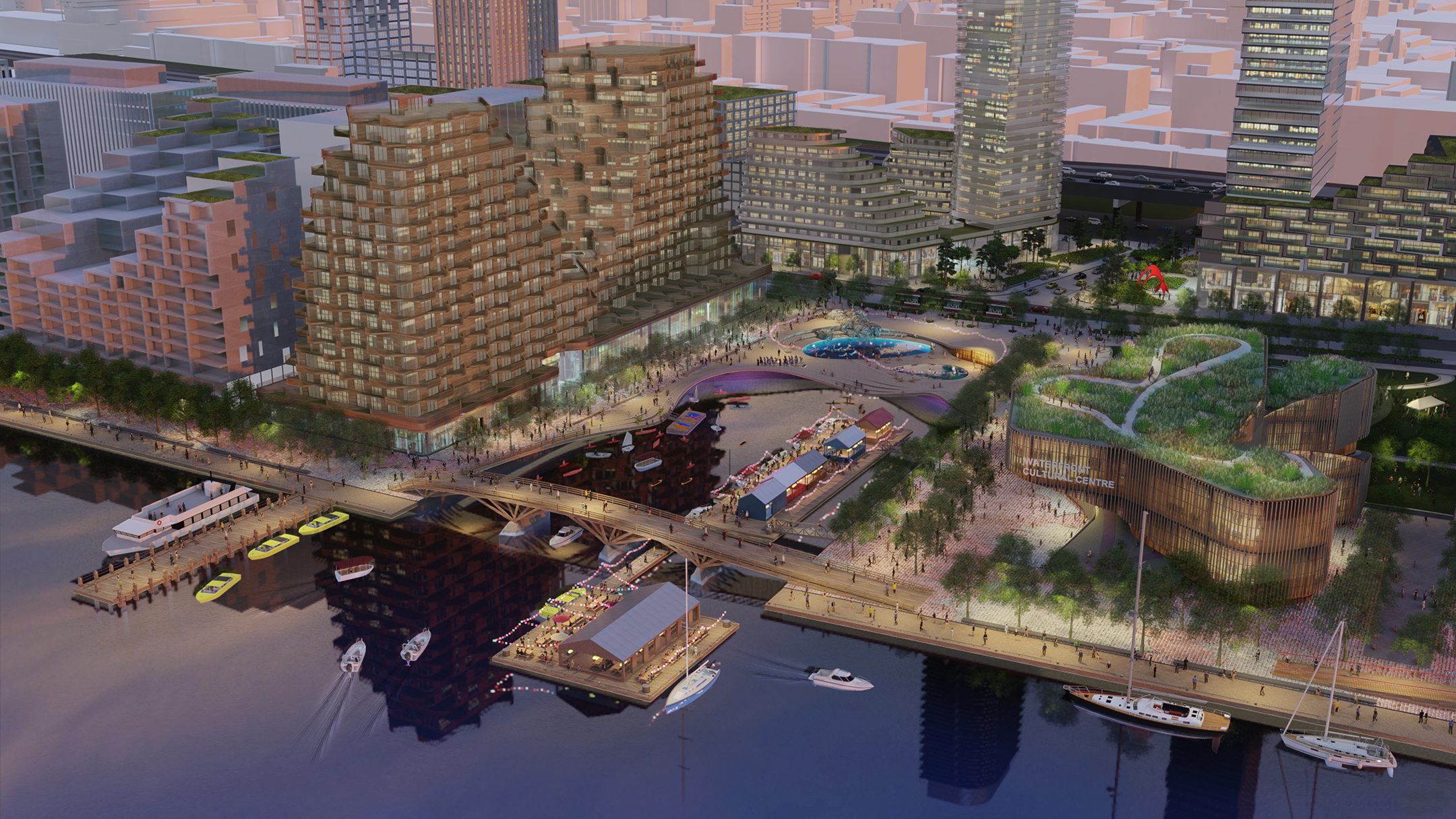
Toronto’s future Parliament Slip will feature numerous water features that connect lake and land. © Waterfront Toronto
By Catherine Osborne